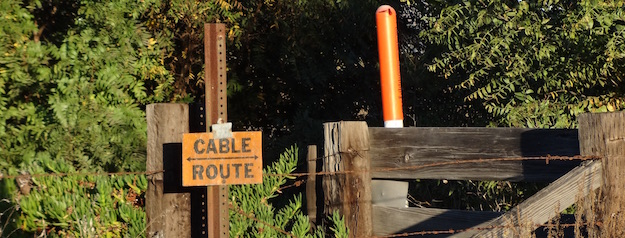
Another try at raising California’s minimum broadband standard to 25 Mbps down/3 Mbps up, from the current 6 Mbps down/1.5 Mbps up level, is gathering momentum in Sacramento. Introduced earlier this year by Santa Cruz assemblyman Mark Stone, assembly bill 238 would have raised the bar both for eligibility requirements for California Advanced Service Fund (CASF) subsidies, and for the infrastructure that’s built using that money. It’s stalled now, due to unexpected opposition from rural interests as well as the usual suspects.
No surprise, incumbent telecoms companies are completely opposed to it. The cable industry’s lobbying front in Sacramento – the California Cable and Telecommunications Association – keeps pushing the false idea that CASF is only meant to fund infrastructure in areas that incumbents have decided to ignore completely, rather than also improving service in places where cable and telephone companies have let copper systems rot on the poles. Or, in the case of CCTA’s clients, claimed franchise areas and never built anything.
Telephone companies have been more circumspect in public statements; behind closed doors it’s different. At one meeting I attended, Verizon’s representative was not only loudly opposed to expanding the CASF program, he told such a bald faced lie – claiming it’s impossible for telco copper systems to support 25 Mbps – that even AT&T’s rep contradicted him.
Rural counties opposed AB 238 too, though, fearing that 1. money would be diverted to urban areas under the new standard and 2. requiring subsidised systems meet the 25/3 standard would break the business case for rural copper upgrades.
The first concern turned out to be misplaced. An analysis by the California Public Utilities Commission shows that the higher standard would increase the percentage of CASF-eligible homes in rural areas from 57% to 65%, based on wireline eligibility. Urban eligibility would barely budge, going from 2% to 3%. Even that’s an overstatement. Eligible urban homes tend to be in pockets that are too scattered to bundle up into a viable project area. Santa Cruz County – Stone’s district – was an exception until Comcast’s recent decision to upgrade to full DOCSIS 3 capability took it off the table. So urban eligibility might not even be as much as 3% anymore.
The question of how good subsidised rural infrastructure needs to be is a knottier one. In commitments made to the CPUC and the California Emerging Technology Fund, Frontier Communications insists on a lower standard – 10 Mbps down/1 Mbps up in rural areas generally, and 25 Mbps down/2 Mbps up in selected, likely urban, areas. Although it’s aside from any CASF eligibility considerations, Frontier’s insistence on lower standards highlights a fundamental problem: rural copper systems were never lavishly provisioned in the first place, and decades of neglect combined with ever increasing 21st century bandwidth demands require expensive rebuilds and redesign of wireline infrastructure to plausibly meet the 25/3 standard. Simply upgrading network electronics, as Frontier evidently plans, won’t do it.
But CASF subsidies exist precisely because the cost of bringing rural broadband infrastructure up to modern standards is so steep. Spending the money on patchwork upgrades that fail to meet today’s minimum needs will guarantee continued economic decline in rural California.
